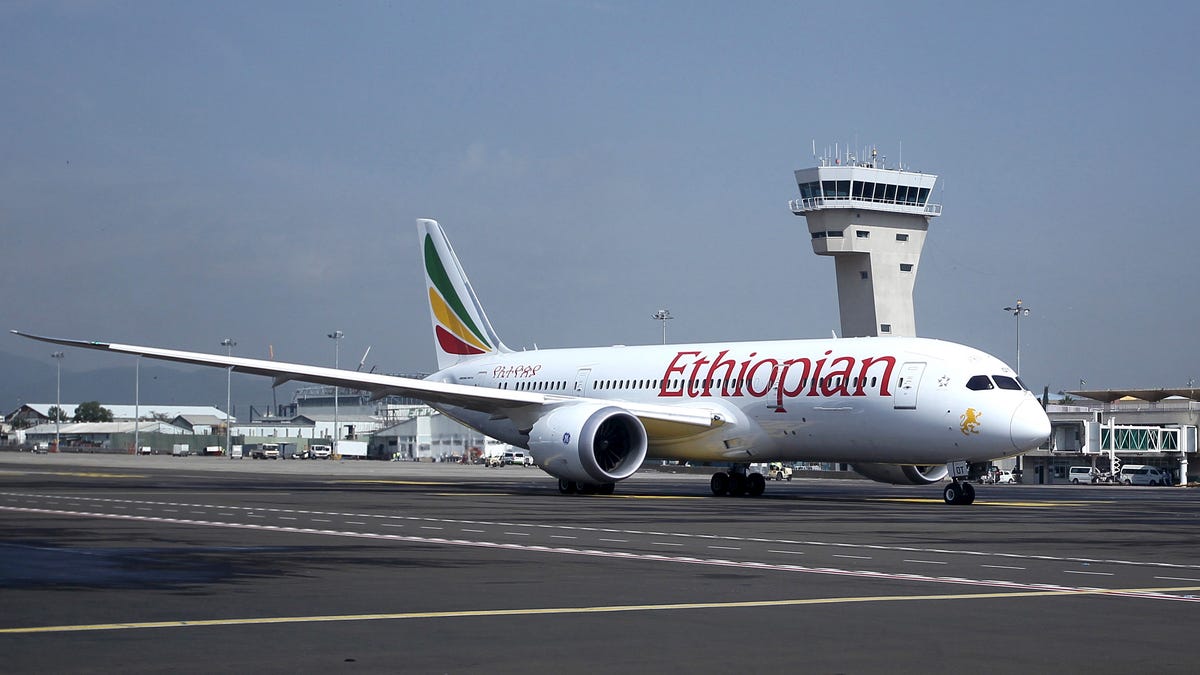The airline plans to purchase 41 more Boeing 737-8 Max planes
“Once bitten, twice shy,” doesn’t really apply to Africa’s biggest carrier, Ethiopian Airlines. Amid this year’s Dubai Air Show, the company has announced that it has ordered 20 planes of the Boeing 737-8 Max—the same model that killed 157 people six minutes after taking off from Ethiopia’s capital Addis Ababa in March 2019.
Five months earlier, a similar plane—the Lion Air 737 Max—crashed in Indonesia’s Java Sea, causing 189 instant fatalities. In both cases, investigators determined sensor malfunctions to be the cause.
Boeing admitted full responsibility for the malfunctions. The accidents led to the grounding of 737 Max models for two years; flights were resumed in June 2021.
Why is Ethiopian Airlines buying 737-8 Max planes?
Most airlines have since avoided purchasing the aircraft, with only 30 out of the world’s 5,000 airlines flying it. But Ethiopian Airlines thinks adding the model to its fleet makes business sense—despite travelers citing fears of flying in the 737 Max since the 2019 accident. “We have renewed our confidence in that aircraft,” CEO Mesfin Tasew told the press in Dubai. “We believe we have checked and confirmed that the design defect of that aircraft has been fully corrected by Boeing.”
Tasew also said Ethiopian Airlines would purchase 21 more 737 Max planes in the near future. It demonstrates, he added in a press release, the company’s commitment “to serve passengers with the latest technologically advanced airplanes.” The airline said in the release it is purchasing the model because it “reduces fuel use and emissions by 20%” while minimizing noise by 50% compared to the planes it will replace.” But returning to the plane hasn’t been without controversy for Ethiopian Airlines in the past, particularly among families of crash victims.
read more: https://qz.com/ethiopian-airlines-boeing-737-max-faa-fatal-accident-1851028514



Yup, that’s definitely what Boeing did the first time around when a singular sensor failure would cause a fatal nose dive.
A sensor issue which was then fixed after a long and thorough FAA investigation. Pilots wouldn’t be flying these things if they thought there was still a safety issue present, nor would the FAA approve Boeing to sell them.
Yeah mate, I understand at this moment, this is probably the most scrutinized and safe plane out there.
But OPs comment was frankly naive. The first time the 737Max was released there were major lapses at both Boeing and the FAA that cost lives. So the mere fact of Boeing selling the planes equating to safe is not established fact nor a logical conclusion.
A single sensor failure did not cause a fatal nose dive. A sensor failure led to a situation where pilots from airlines not well regarded for quality failed to correct it for between 5-10 minutes despite having suitable checklists guidance to do so. Any complex machine can be dangerous if not operated the way it was designed to be and some nations do not take aviation safety as seriously as others, planes are designed and built expecting a certain standard and failing to meet that standard can lead to dangerous situations.
A complex machine that operates significantly differently from previous versions should always require additional training in said system. Not just required reading off a manual or a checklist.
Which is exactly how Boeing lied to the FAA and other airlines. They fought hard and lied to prevent pilots having to spend any time at all in a simulator.
How they even thought a single sensor for critical controls was adequate is beyond me. I mean I’ve worked in buildings where they built in triple redundant sensors for the HVAC system.
Revisions to aircraft designs are nothing new and the amount of detail in the flight manual is often times limited to “sufficient to safely fly the plane.” The procedure for uncommanded stabilizer motion was sufficient to recover the plane in both situations, neither crew executed it properly or in time. Using fly by wire to make handling characteristics standardized is completely normal and being fed from a single sensor isn’t uncommon for a system that itself has backups. Boeing never lied to the FAA, they told them the minimum required and the FAA said it was fine; for a crew from a first world airline it was.